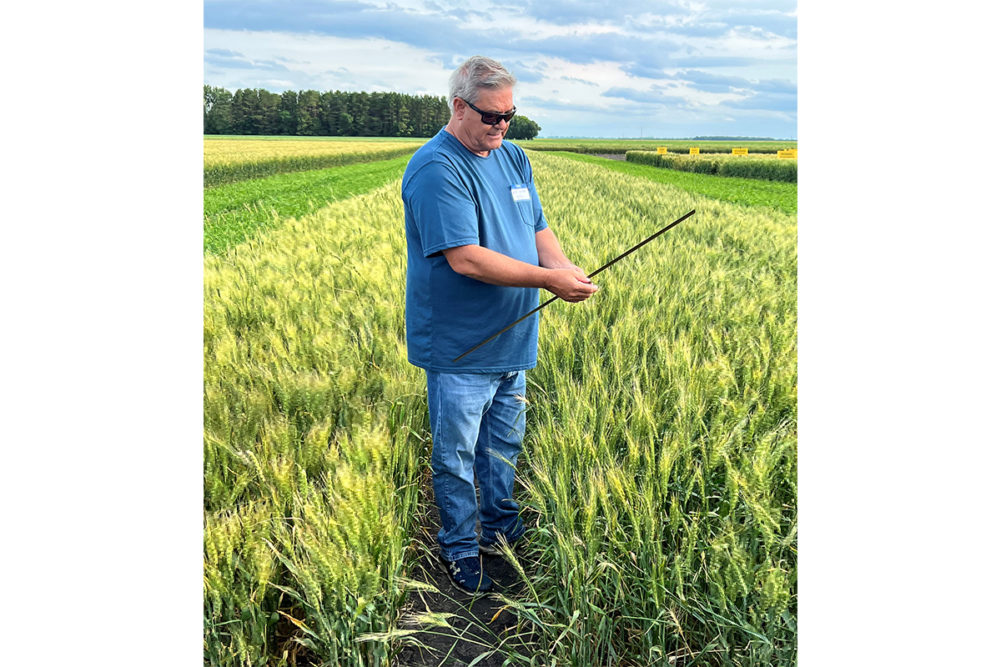FARGO, ND. — Scouts trekking across North Dakota this week were told to expect a crop behind normal pace but in relatively good shape.
Around 50 professionals gathered Monday afternoon in Fargo at the Delta by Marriott hotel for the opening meeting of the 2022 Hard Spring and Durum Wheat Quality Tour. Participants represent all aspects of the wheat value chain, including growers, millers, bakers, ingredient and food manufacturers, as well as several from academia, the government and the media.
“We want to try to define the crop prospects, try to identify potential problems with disease or insects, we want to get a good understanding of the health of this crop at this point in time, try to figure out when harvest will happen,” said Brian Walker, retired former technical director at Miller Milling, who hosted the meeting. “Typically, it doesn’t get better, it can often go downhill from here, but this is a snapshot in time, and the overall health of this crop is important for us to know.”
Erica Olson, market development and research manager with the North Dakota Wheat Commission, gave scouts an overview about the spring wheat growing season to date. The main feature was a later, longer window of planting caused by weather. Specifically, North Dakota saw extensive rains, cold temperatures and a few snowstorms in April. Most of the hard red spring wheat production area was too wet to seed in a timely fashion. Scotus were advised they would see empty fields known as “prevent plant” acres where the crop could not be planted before the seeding window closed.
“Crop development is behind,” Ms. Olson said. “Some regions saw a little bit of stress because the weather turned hot and dry right away. We’re seeing higher-than-normal levels of grasshopper presence. But from what I’ve seen, and most reports are that the crop looks great, but it is simply behind normal pace.”
Meanwhile, eastern Montana soil moisture profiles were extremely lacking during planting, and the region has struggled with drought conditions through the growing season, Ms. Olson said.
Scouts will depart Fargo early Tuesday in groups of three or four en route to Bismarck and Mandan, ND. Along one of seven assigned, color-coded routes, scouts will stop every 10 miles or so, and enter wheat fields to take measurements, avoiding all fenced property and fields posted no trespassing. Measurements include head count within a specified length, spikelet count, and kernel count. Those figures, along with the observed spacing between planted rows, are fed into a proprietary formula devised by the US Department of Agriculture to determine estimated bushels per acre for a visited field. A carload of scouts average their findings for fields throughout the day, and submit them to be averaged with the other teams’ results, creating a daily and cumulative bushels per acre estimate, which informs production estimates at the end of the three-day tour.
The 2022 Hard Spring and Durum Wheat Quality Tour is planned and executed by the Wheat Quality Council, a coordinated effort by breeders, producers and processors to improve the overall quality of wheat and wheat flour. The council was founded in 1938.




